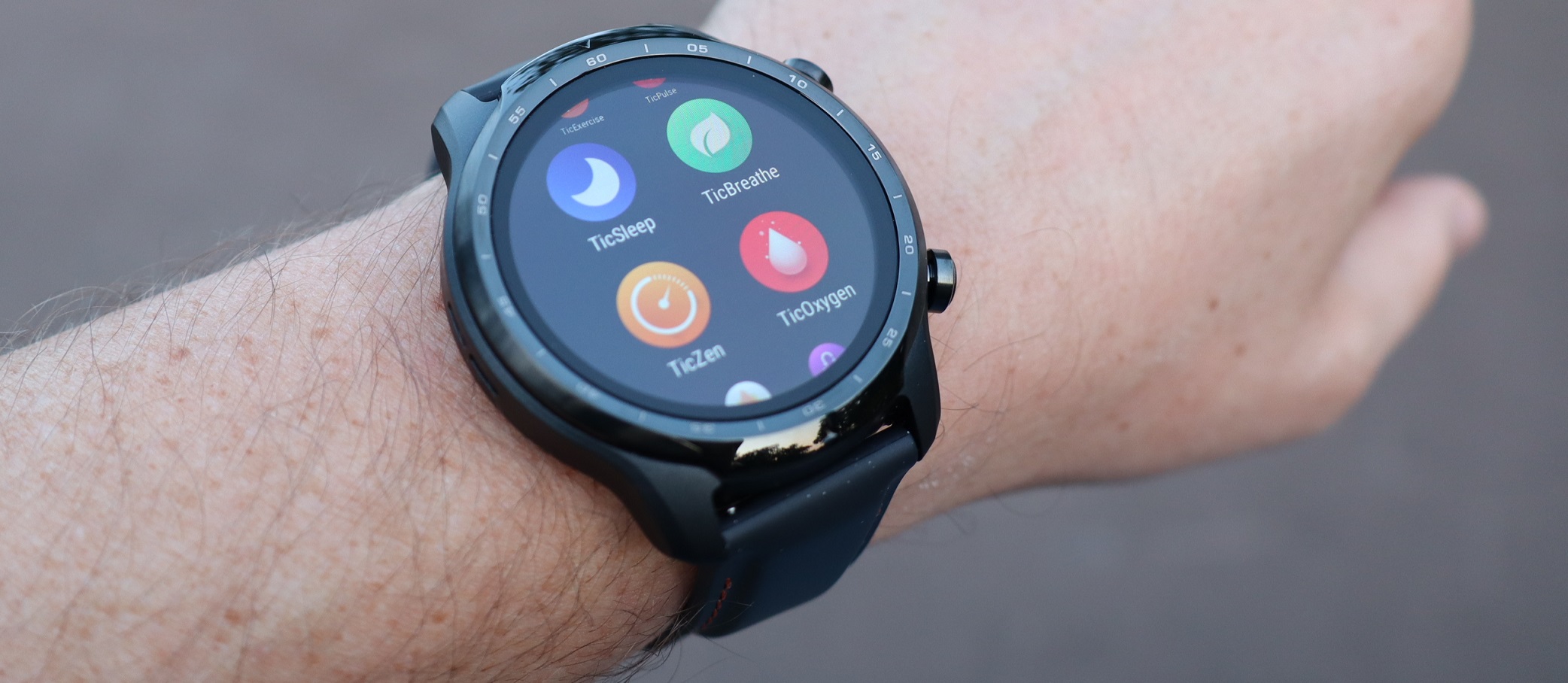TechRadar Verdict
The TicWatch Pro 3 is a quality smartwatch with three-day battery life, great speed, and a sleek design. It doesn’t particularly excel at anything, but it satisfies all your basic workout and message-previewing needs, with a standard Wear OS software setup and a few TicWatch-branded workout and health apps. It’s notably cheaper than top-tier smartwatches, so pick it up if you’re willing to forgo some features to save some cash.
Pros
- +
Big battery lasts up to 3 days before charge
- +
Fast Snapdragon 4100 chipset
- +
Crisp, high-resolution display
Cons
- -
Wear OS is unremarkable
- -
Interface sometimes very unintuitive
- -
Sleep tracking isn’t too accurate
Why you can trust TechRadar
Two-minute review
The TicWatch Pro 3 is one of the best Wear OS smartwatches we’ve tested, full stop: with a big display, a huge battery, and a look that streamlines its large size to keep it from feeling chunky, it’s got the right perks for anyone who wants a classy-looking watch with useful, if not standout, features.
That means it’s one of the best alternatives to the best smartwatches out there, including the Samsung Galaxy Watch 3 and the Apple Watch 6, especially since the TicWatch Pro 3 comes in much cheaper than either of those. While Wear OS doesn’t have quite the interoperability in device ecosystems as watchOS or Tizen wearables, it covers the basics, from phone call commands and email/notification previews to tracking fitness.
Instead of software, the TicWatch Pro 3’s physical features are its greatest strengths: the 1.4-inch OLED display is sharp, vivid, and responsive to touch controls. There are heartbeat and SpO2 sensors on the bottom of the watch case, and two buttons on the right side for navigation shortcuts, but it’s the overall look of the smartwatch – sleek and refined, with a matte black finish on the case, and a glossy dial with thin bezels – that make it stand out among chunkier rivals.
The smartwatch’s appearance is its most obvious upgrade on its predecessor, the original TicWatch Pro (no, there wasn’t a TicWatch 2 Pro) that came out in 2018, which is only 0.4mm thicker but looks noticeably bulkier, with wider bezels on the dial.
But the biggest upgrade is under the hood: the TicWatch Pro 3 is the first smartwatch with the Snapdragon Wear 4100 platform, and combined with the 1GB of RAM, the smartwatch coasts through switching between screens and apps without a hitch. This hasn’t always been the case with Wear OS watches, let alone some of Samsung’s Tizen ones, so it’s appreciated here.
Its 8GB of storage is pretty standard, and given most apps won’t be more than 3 or 4MB, it’s not much of an issue, though it’s far from the massive 32GB of storage on the Apple Watch 6, say. While the Wear OS apps aren’t as curated as those on the watchOS App Store or Tizen Store, there are still enough fitness, weather, and news apps to pick from. TicWatch’s suite of apps is suitable, though a few questionable interface choices keep them from being as intuitive as competing software.
Overall, the TicWatch Pro 3 is a solid watch with a high price tag that still comes in cheaper than the competition. It’s a good smartwatch that excels in speed and looks, not intuitive or novel software.
TicWatch Pro 3 price and release date
The TicWatch Pro 3 release date was September 24, 2020, with a price tag of $299 / £279 / AU$449.
That’s a bit pricier than the original TicWatch Pro’s launch cost of $249.99 / £219.99 / AU$369.99, but the higher cost comes with more features and improvements in the TicWatch Pro 3, like an SpO2 sensor and a sleeker case.
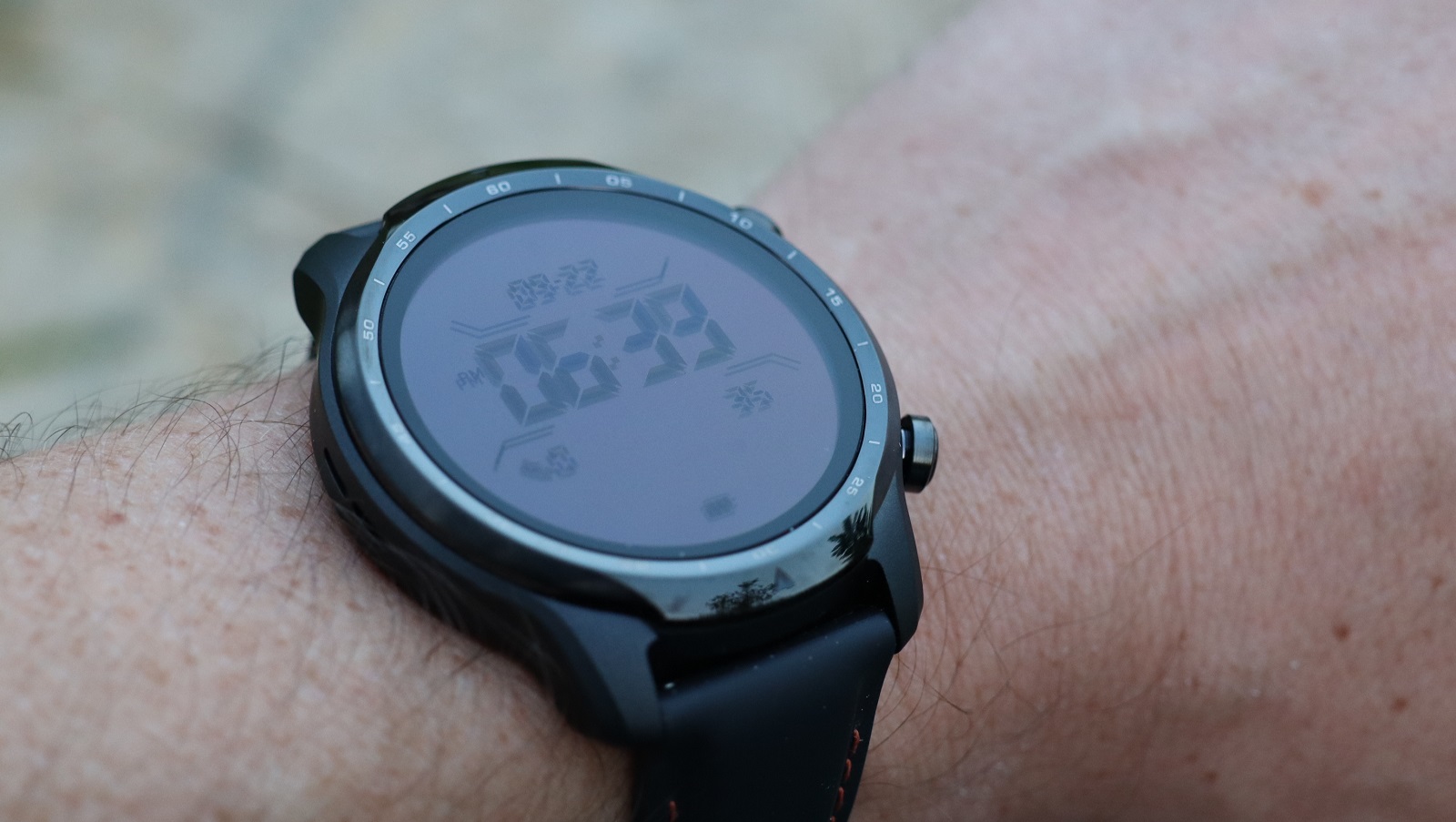
Design and display
Among smartwatches, the TicWatch Pro 3 looks as premium as its price suggests, with a conservative chic rather than the futuristic ‘bulbous’ look of the Apple Watch series or Samsung Galaxy Watch Active 2. It’s got a traditional timepiece look and some elegant digital faces to match, if you’d like, which come across great on the crisp display.
The TicWatch Pro 3 has a sleek appearance with its matte black metal case, black glossy dial with thin bezels, and relatively thin build. It’s a big wearable at 48mm wide, to be sure, but looks far slimmer than its predecessor and other smartwatches of yesteryear. Its 42g weight makes it lighter than today’s pricey watches, like the Apple Watch 6 (47.1g) and smaller Galaxy Watch 3 (48.2g) – and even the latter’s 43g titanium version. And with such a wide case, it feels quite balanced on the wrist.
As previously said, the TicWatch Pro 3’s 1.4-inch 454 x 454 display is very crisp, bright, and responsive to the touch. It has an always-on mode, too, which looks completely different to the usual smartwatch face, ditching pristine graphics for a monochromatic set of numbers that looks like digital watches of old.
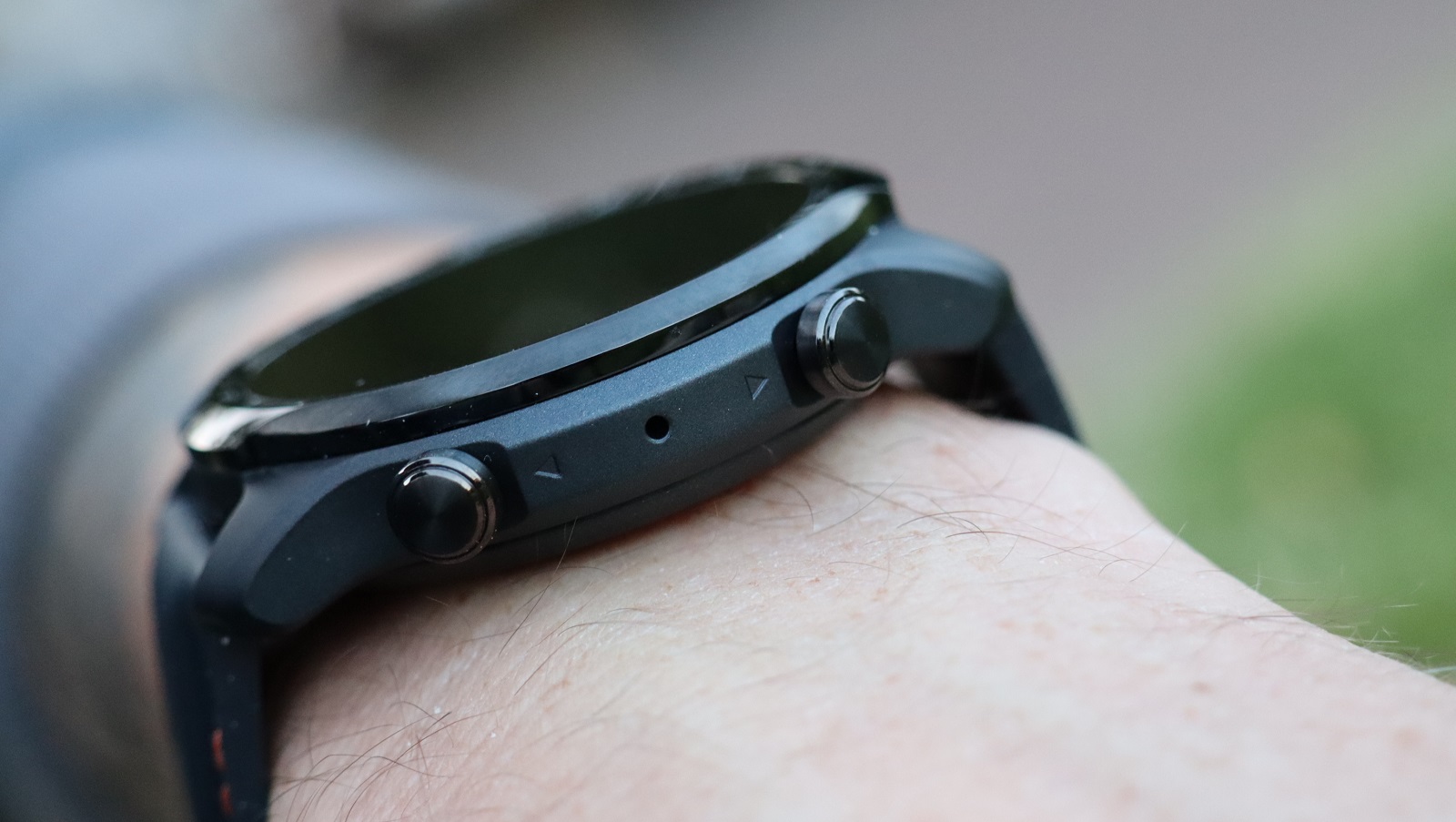
Most of the design changes from its predecessor trim down its appearance, making it look far leaner despite being only 0.4mm thinner (12.2mm thick for the TicWatch Pro 3 vs. 12.6mm for the TicWatch Pro). Otherwise, it’s almost identical, with two buttons on the right edge for functionality: the top button brings up the app screen and a long-press activates Google Assistant, while the bottom one is a customizable app shortcut. The bottom of the watch packs the heart rate monitoring and SpO2 sensors.
The TicWatch Pro 3 comes with a synthetic watch strap with stitching that makes it look a bit like the leather bands on more premium watches. This at least makes the watch more suitable for workouts – or shallow swimming thanks to the watch’s IP68 dust- and water-resistance rating – but also gives it a higher-quality look from afar. It’s a nice compromise we’re surprised we haven’t seen from other smartwatches.
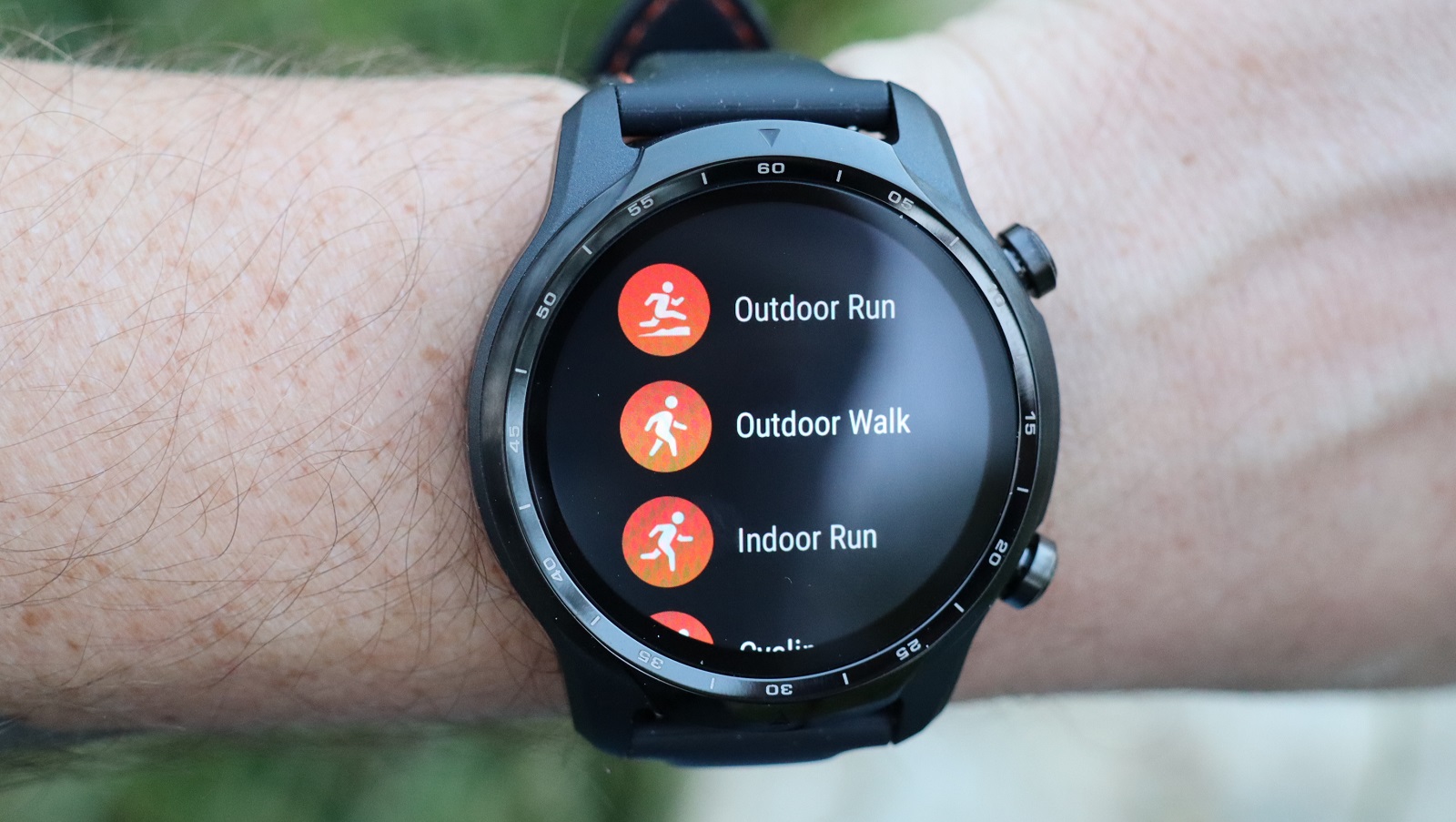
Fitness and health
The TicWatch Pro 3 packs a suite of TicWatch-made workout and health apps, which are all branded with the Tic- prefix (TicExercise, TicHealth, TicSleep, and so on). This divvies the expected features pretty cleanly, though you’ll keep getting prompted to feed all your biometric data back to your Mobvoi account.
The TicExercise app works well enough with 13 workouts to choose from, though its interface makes some odd, unintuitive choices, like not having a ‘stop exercise’ button – you have to press and hold the ‘lap’ command (or press and hold the lower-right physical button on the watch’s side). There’s no tutorial either. If you want other workout and health options, you can go for Google’s Fit suite of apps, which come pre-installed.
The TicWatch Pro 3 does have GPS, tracking your route during a workout and displaying it, though we didn’t always find it responsive, and sometimes it struggled to show the route with context – like, say, on a proper map.
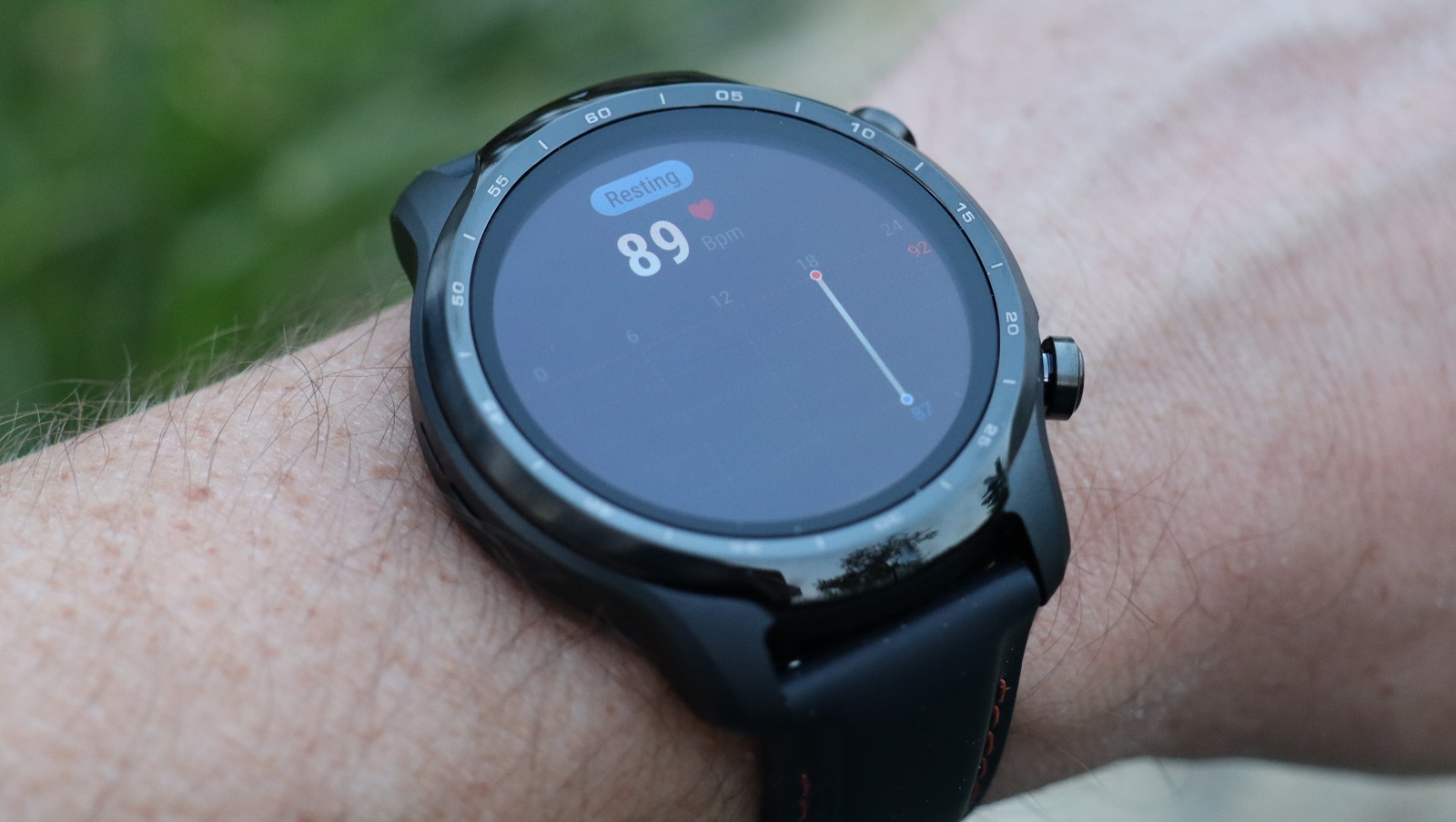
This makes exercise tracking a bit annoying to figure out, but thanks to its speedy specs, the watch is very responsive mid-workout. Physically, it’s not too cumbersome and won’t get much in the way of wrist rotations, and the weight is spread out enough that it isn’t top-heavy like other clunkier watches – but it’s still noticeable, unlike smaller fitness-focused devices like the Samsung Galaxy Watch Active 2. The synthetic band that comes with the watch handles sweat just as well as other rubber-like straps popular in smartwatches, and we felt comfortable cranking out reps and going extra laps with the TicWatch Pro 3.
Through the other Tic-suite apps, you can measure heart rate and blood oxygen level as well as track your sleep. The heart rate monitor and SpO2 sensors on the bottom of the watch take readings easily enough so long as the case is flush against the skin. Just be aware that it can track your heart rate, but not take a proper electrocardiogram (ECG), as other leading smartwatches do.
The sleep tracking isn’t quite as accurate as we’d like, as it counted periods of late-night immobility (okay, playing games with friends) as sleep sessions, unlike other smartwatches we’ve used alongside the TicWatch Pro 3. But the lengthy three-day battery life means we didn’t worry about remembering to recharge the TicWatch Pro 3 before tracking sleep every night: once, diligent as we are, we failed to top up our Apple Watch 6 and it died overnight, but TicWatch’s new smartwatch lasted through despite going around 60 hours without recharging.
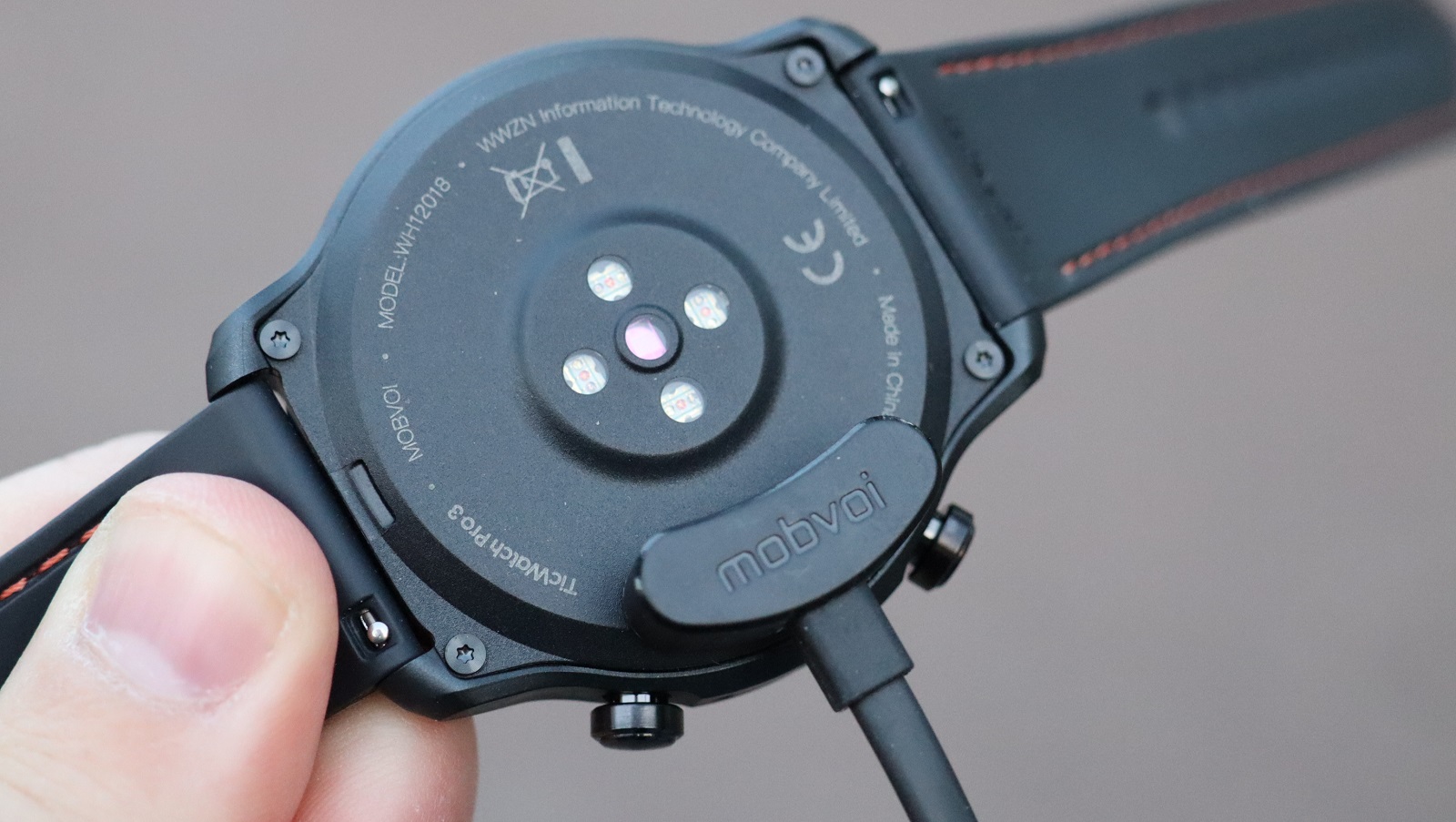
Performance
The TicWatch Pro 3 is the first smartwatch to pack the Snapdragon 4100 chipset, and with 1GB of RAM, it’s a fast watch that hasn’t lagged on us yet. It even aced our silliest test – watching YouTube videos on the Video Tube app – which streamed in seamlessly as fast as our Wi-Fi allowed.
The TicWatch Pro 3 follows a pretty standard installation of Wear OS, with the usual ‘slide left/right/up/down’ gesture shortcuts for events/tiles/notifications/control center, respectively. If you’ve ever used a Wear OS watch before, you won’t be surprised.
Hit the top-right button and you’ll find all your installed apps in a double column, which is a simple way to sift through your software, though it’s not nearly as fancy as the radial selection of apps on the Samsung Galaxy Watch 3, for example, or the swath of icons on the Apple Watch. But the fast chipset makes touch navigation breezy and as quick as you can swipe.
There’s a generous selection of watch faces, and while we’re ordinarily a fan of minimal designs, we found ourselves picking the faces that packed in the most complications – because, unlike some other watches, the TicWatch Pro 3’s screen resolution is detailed enough to see all of them. Finally, we can see health information like steps and heart rate and check the time, too.
Battery life
The 577mAh battery is another of the TicWatch Pro 3’s standout features, as it regularly lasted us past two days and into a third. You can cheat out more battery life by switching to Essential mode – up to 45 days on a full charge, boasts Mobvoi – which has the same appearance as the bare-bones monochromatic digital watch-style always-on display.
While decidedly old-school in looks, Essential mode shows more information like heart rate, oxygen saturation, step count, and sleep monitoring data than we’ve seen from battery-saving display modes on other smartwatches. It grew on us, too. Why don’t more smartwatches embrace the old-school Casio digital watch aesthetic?
Lasting up to three days before needing to recharge puts the TicWatch Pro 3’s battery life around the length of the Samsung Galaxy Watch 3, which is surprising given the latter’s smaller 340mAh battery. Regardless, the new TicWatch packs a 5V1A charger (but not a wall mount – you’ll have to use your own) which recharged the watch about 60% in an hour.
Should you buy the TicWatch 3 Pro?
Buy it if…
You want a large, svelte smartwatch
The TicWatch Pro 3 is a big watch that doesn’t feel big: it’s noticeably less chunky than its predecessor and in line with the pricier Samsung Galaxy Watch 3. Buying it for looks is totally okay.
You want a health-monitoring watch at a relative discount
Yes, the TicWatch Pro 3 isn’t cheap, but it’s not quite as pricey as the Galaxy Watch 3 or the Apple Watch 6 and packs a heart rate monitor and SpO2 sensors.
You want a long-lasting battery
The Samsung Galaxy Watch was the king of the battery hill by lasting up to five days, but it’s dated now, and the TicWatch Pro 3 is one of the longest-lasting watches on the market.
Don’t buy it if…
You want the absolute best interface
Wear OS is fine, but not as intuitive as watchOS or even Tizen. If you want a friendlier interface at the same price tier, consider the Apple Watch SE.
You want more accurate health, sleep, and fitness analytics
While the TicWatch Pro 3 did fine at tracking our workouts, it didn’t do quite as well in tracking our sleep, and it’s missing the ECG reading features of other top watches. Try a leading Apple Watch instead if sleep tracking or precise heart monitoring is your priority.
You want a cheap watch
The TicWatch Pro 3 isn’t terribly affordable, so if you’re on a budget, try picking up a slightly older model like the Samsung Galaxy Watch Active 2 or Apple Watch 3.
First reviewed: October 2020
David is now a mobile reporter at Cnet. Formerly Mobile Editor, US for TechRadar, he covered phones, tablets, and wearables. He still thinks the iPhone 4 is the best-looking smartphone ever made. He's most interested in technology, gaming and culture – and where they overlap and change our lives. His current beat explores how our on-the-go existence is affected by new gadgets, carrier coverage expansions, and corporate strategy shifts.
